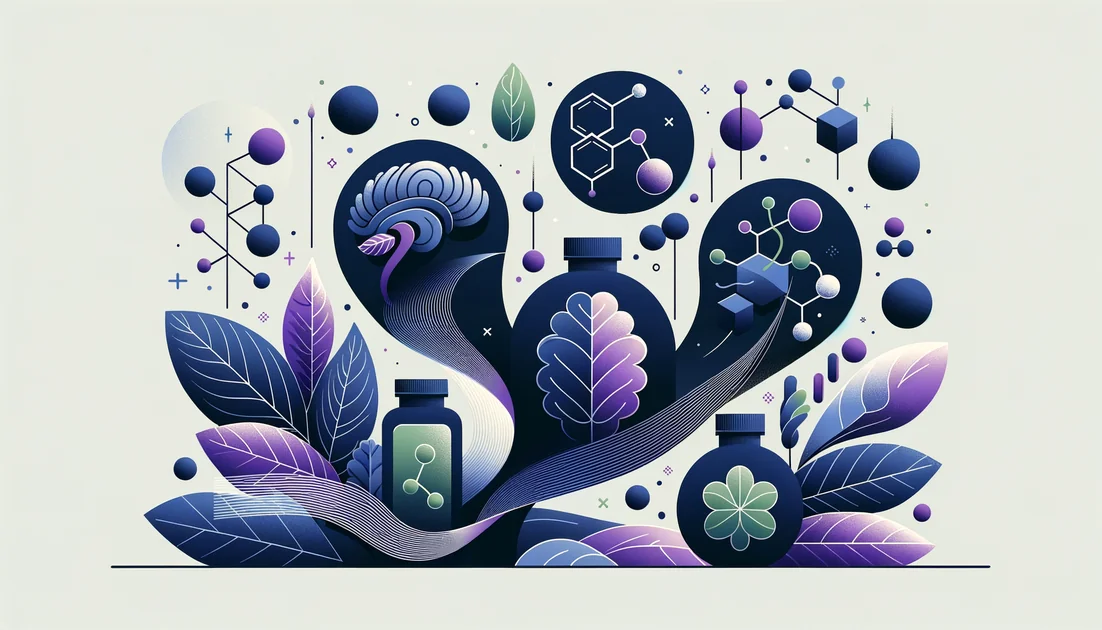
From Mountain Monks to Memory Labs: How Lion's Mane Teases the Brain's Capacity to Reconnect
A monk in a cedar-dark temple ladles pale tea, a snowfall of mushroom threads drifting like tiny comets. Centuries later, in a fluorescent lab, a neuroscientist watches something equally quiet and astonishing: the tips of brain cells unfurl wider, as if reaching out to hold hands. The brew and the microscope are looking at the same thing—the brain's ability to grow connections—and the mushroom is lion's mane.
- Evidence
- Promising
- Immediate Effect
- Within hours (small, task-specific in some trials) → 8–16 weeks
- Wears Off
- About 4 weeks after stopping
From monastery kitchens to microscopes
In East Asia, lion's mane—hóu tóu gū in Chinese, yamabushitake in Japanese—was food and medicine long before it became a supplement aisle celebrity. Historical records describe it in soups and tonics, linked to nourishing the gut and supporting vitality; folklore places it in the cups of mountain monks seeking steady focus for long meditations. Today's ethnopharmacology texts trace those roots, showing how a culinary fungus entered traditional medical systems and persisted through centuries of practice. [1][2]
The moment scientists leaned in
Modern researchers noticed something peculiar in lion's mane. In 1991, Japanese chemists isolated molecules from the mushroom—hericenones—that nudged nerve cells to make more of a protein called nerve growth factor, essentially a fertilizer that helps neurons sprout and survive. Later, cousins of these molecules, the erinacines (found mostly in the threadlike mycelium), joined the cast. Together they suggested a plausible storyline: compounds that might help the brain rebuild and rewire. [3][4] Then came a striking lab scene from the Queensland Brain Institute in 2023: under super-resolution microscopes, lion's mane extracts swelled the growth cones of neurons—their exploratory fingertips—while neurons extended longer projections, the raw material of new connections. "We found the active compounds promote neuron projections, extending and connecting to other neurons," said Professor Frédéric Meunier. His colleague added their aim was to find natural compounds that could "reach the brain and regulate the growth of neurons." [5]
What happened when people took it
When scientists moved from dishes and mice to people, the story grew more human—and more complicated.
In a double-blind trial of older adults with mild cognitive impairment, 3 grams per day of powdered fruiting body improved cognitive test scores over 16 weeks; four weeks after stopping, scores slid back toward baseline. The benefits seemed to depend on continued intake, echoing the idea of fertilizer: stop watering, and growth slows. [6]
In a small randomized trial of menopausal women, cookies enriched with lion's mane eased depression and anxiety scores over four weeks, hinting at effects on mood and stress. [7]
In people with overweight or obesity, eight weeks of supplementation coincided with better mood, improved sleep, and shifts in brain-related proteins such as BDNF, a molecule the brain uses to learn. Intriguingly, benefits persisted during a short washout, suggesting some staying power. [8]
Another randomized study in 2019—this time in generally healthy older adults—saw improvements on only one of several cognitive tests after 12 weeks of fruiting body supplements, a reminder that not all outcomes move in lockstep. [9]
The twist: healthy brains aren't easy to upgrade
If you take lion's mane when you're already humming along, the results may be subtle—or absent. The Alzheimer's Drug Discovery Foundation's evidence review notes mixed outcomes in healthy adults, including studies where lion's mane failed to help and even one where young adults did slightly worse on a delayed recall task. At the same time, a recent pilot found a tiny, task-specific boost in reaction time an hour after a single dose. These snapshots suggest lion's mane is not a universal cognitive booster; it may shine most where circuits are strained. [10][11][12] This paradox—bigger effects in vulnerable brains than in sharp ones—fits the biology. If lion's mane acts like growth-encouraging weather, parched soil (neural systems under stress, aging, or inflammation) may respond more than a well-watered garden. It also fits with a 49-week pilot using erinacine A–enriched mycelium in people with early Alzheimer's: measures of daily function and the MMSE favored the mushroom over placebo, a cautious signal that deserves larger trials. [13]
What's inside the bottle matters
Lion's mane is not one thing. The snowball you sauté (fruiting body) is rich in hericenones; lab-grown mycelium tends to carry erinacines. Different extracts concentrate different families of compounds, and the field is still standardizing how to measure them. Reviews emphasize the variability between strains, growing substrates, and extraction methods—differences that can change what ends up in your capsule. Look for products that tell you what's inside (for example, beta-glucan content and whether the extract is fruiting body, mycelium, or both), and understand that "10:1 extract" is a process claim, not a promise of specific active molecules. [4][14] Safety so far looks reassuring. The NIH LiverTox database reports lion's mane has not been convincingly linked to liver injury; in human trials, side effects have tended to be mild (occasional digestive upset) and rare hypersensitivity reactions have been described. As with any bioactive, quality and your own history (especially mushroom allergy) matter. [15]
How to try it thoughtfully
If you're curious, think like a scientist and match the dose and duration to what's been studied:
Cognitive aging and mild impairment: human trials used around 3 g/day of fruiting body for 12–16 weeks, with benefits fading after a month off. Consider a 3-month window before judging. [6][9][10]
Mood and sleep in stressed or overweight adults: benefits appeared over 4–8 weeks in small studies. [7][8]
Early Alzheimer's (under clinical care): an erinacine A–enriched mycelium regimen (three 350 mg capsules daily) showed encouraging pilot results over 49 weeks. [13]
Practical tips: split doses with meals (many studies used divided dosing), and choose brands that specify fruiting body vs. mycelium and provide third-party testing. If you have a known mushroom allergy, skip it; if you're managing complex conditions or multiple medications, involve your clinician. [6][14][15]
What's next
Researchers are following new threads: how lion's mane nudges the brain's own growth programs; whether specific erinacines or hericenones matter most for real-world outcomes; how the gut–brain axis (microbiome shifts, BDNF changes) participates; and even whether neurotrophic effects could help senses like hearing in aging. The lab scenes are getting clearer; the human story is still being written. [5][8][13][16]
"Using super-resolution microscopy, we found the extract increased the size of growth cones—cells' feelers for making new connections," said Meunier. It's a simple image with a profound implication: a kitchen mushroom coaxing the brain's fingertips to reach. [5]
Key takeaways
- •Lion's mane bridges tradition and science: long used in East Asia for focus and vitality, now studied for effects on nerve growth and brain connectivity.
- •Compounds such as hericenones and erinacines appear to stimulate NGF/BDNF pathways and neuronal projections, aligning folklore with lab findings.
- •In mild cognitive impairment, 3 g/day fruiting body for 12–16 weeks improved scores, but benefits waned within 4 weeks of discontinuation.
- •Small studies suggest mood and sleep improvements alongside BDNF shifts; healthy young adults show little to no broad cognitive gains.
- •Practical use: aim for divided doses with meals, commit 2–3 months before judging effects, and anticipate that gains may fade when you stop.
- •Safety notes: generally well tolerated; avoid with mushroom allergy and loop in a clinician if you have complex conditions or multiple meds.
You might also like
Explore more of our evidence-led investigations, comparisons, and guides across every article style.

Doctor's Best
Doctor's Best: licensed science at good prices, limited COAs, and a past labeling misstep



Valerian Root (Valeriana officinalis)
A siren wails over London in 1941. In the underground shelter, a nurse passes around a few earthy, sharp-smelling drops—valerian, the same root Hippocrates praised and Galen prescribed. The idea is simple: calm the nerves, sleep if you can. Eighty years later, the same root sits on modern nightstands, promising rest. But does it deliver—and how? [1][2]

Lion's Mane + Bacopa: Smart Memory Duo or Just Hype?
The combo is a theoretical dual-pathway stack (neurotrophic + cholinergic), but there are no direct head-to-head studies proving synergy.

Tocotrienols
The stealthier cousins of vitamin E—built with springy tails that move differently in cell membranes and behave differently in your body.


